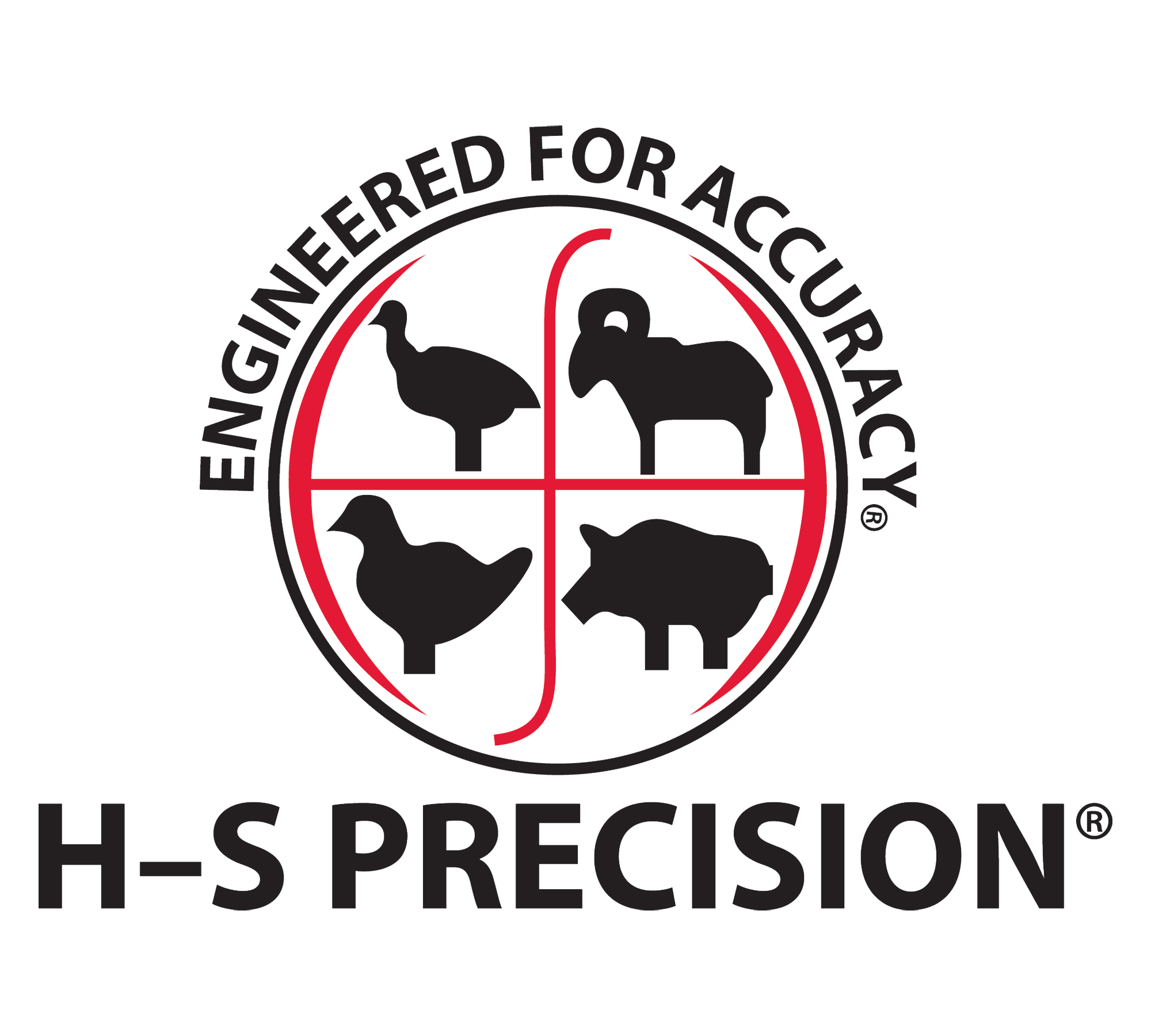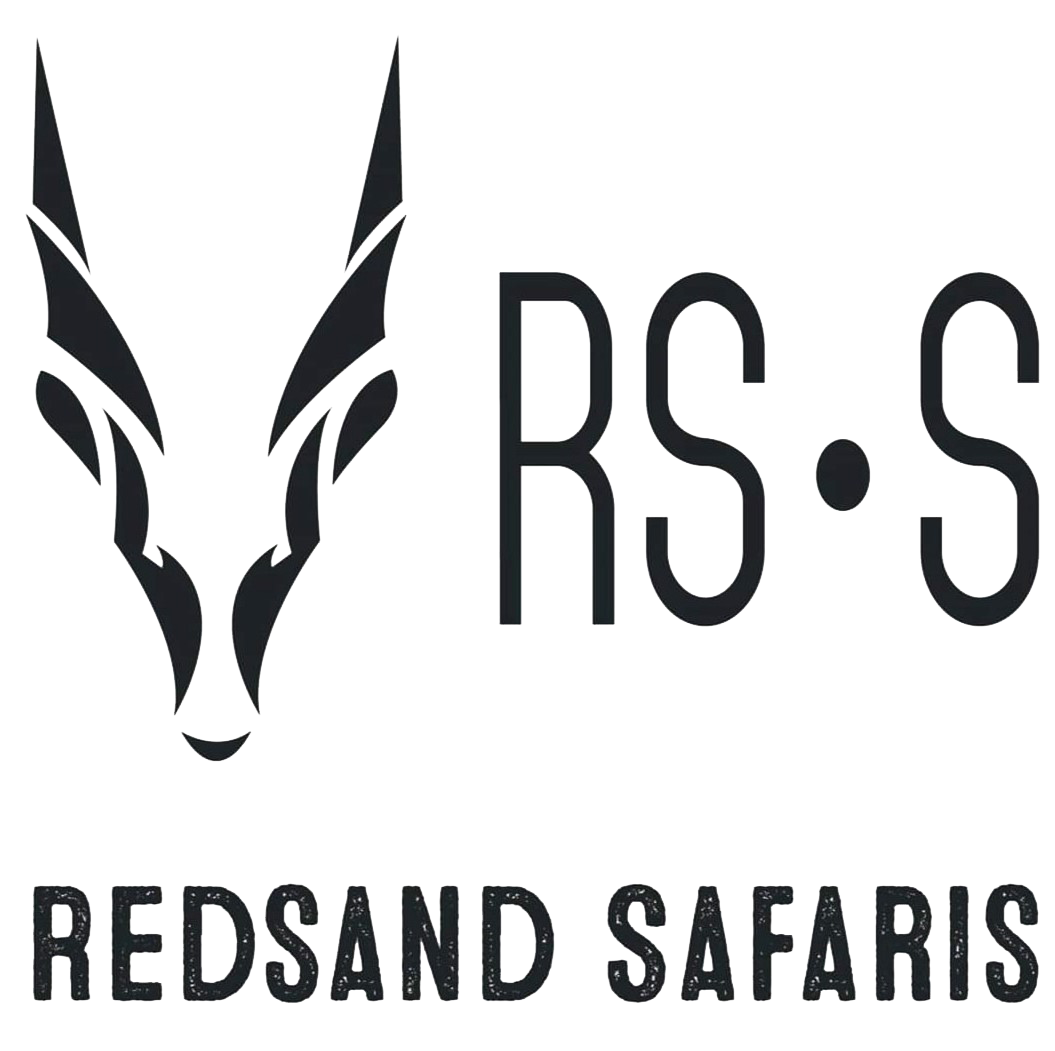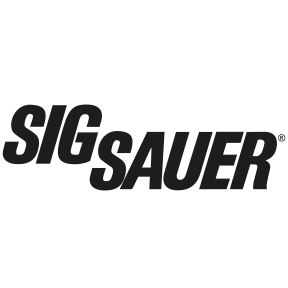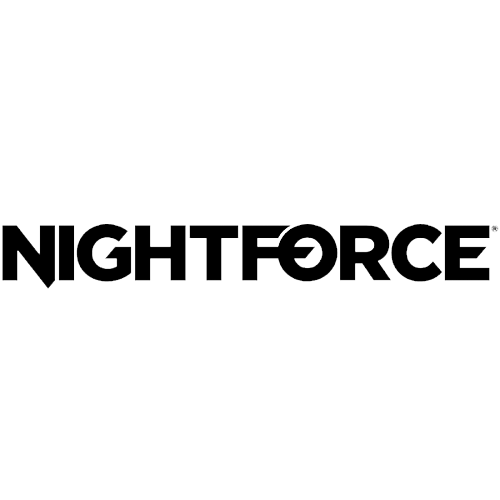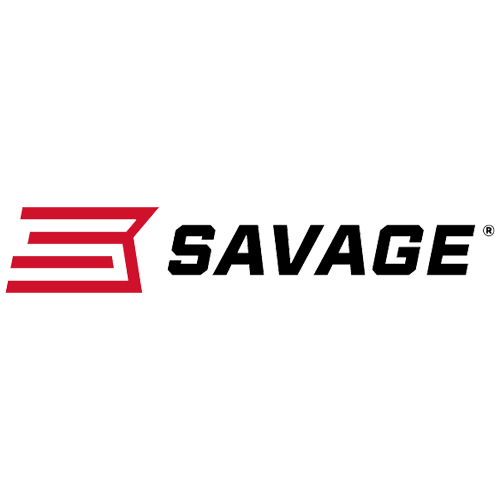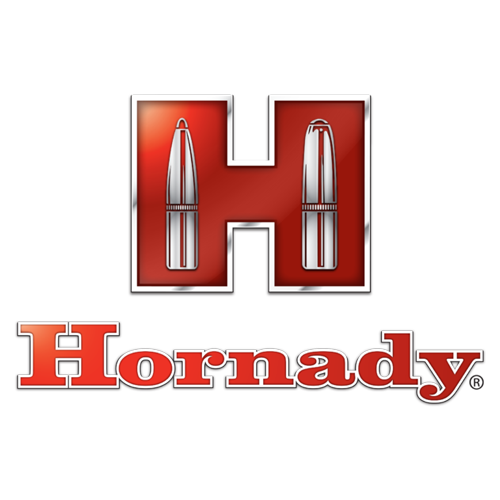2024 SEASON NRL HUNTER RULES AND REGULATIONS
The NRL Hunter is an evolving competition series which intends to offer participants an educational and exciting means to practice shooting in unknown hunting-like conditions. The following rules and regulations govern the participant expectations and conduct.
DIRECTORY
SECTION 1, NRL HUNTER ORGANIZATION AND RESPONSIBILITIES
- Executive Staff
- Executive Committee
- Advisors
SECTION 2, NRL HUNTER SAFETY
- General Rifle Safety
- Rifle Safety While at a NRL HUNTER Match
- Rifle Safety During Your Stage
- Safety Violations and Penalties
- Match Safety Briefing
SECTION 3, MATCH FORMAT
- NRL Hunter’s Responsibilities
- Hunter Responsibilities
- Match Directors Responsibilities
- Range Officers Responsibilities
- RO & Hunter Communications
- Specific Competition Rules
SECTION 4, DIVISIONS, SCORING, AND GRAND SLAM CHAMPIONSHIP QUALIFICATION
- Divisions
- Classifications
- Equipment Weight
- Match Scoring
- Series Points Tracking
- Championship Qualification
- Championship Match and Scoring
SECTION 5, SPORTSMANSHIP
- Good Sportsmanship
- Unsportsmanlike Conduct
- Cheating
- Penalties for Unsportsmanlike Conduct, Cheating, and Rule Violations.
- Reports to the Board of Directors
SECTION 1, NRL HUNTER ORGANIZATION AND RESPONSIBILITIES
A. Executive Staff
The NRL HUNTER Series has an executive staff whose responsibilities include day to day operations, media, match operations, logistics, marketing, and finances. The President appoints the executive staff. For the 2024 season, the Executive staff is as follows:
- President / Founder – Travis Ishida
- Marketing Director / Co-Founder – Brittney Ishida
B. Executive Committee
The NRL HUNTER series has an executive committee to assist the NRL HUNTER Executive staff in all matters. Responsibilities include forming and adjusting the rules and regulations, planning the format of the season, ruling on disciplinary matters and inclusion of additional matches for the following year. The executive committee is appointed by the NRL Hunter President
The executive committee for the 2024 season is:
- Seth Howard
- Josh Reeves
- Verl Dallin
- Michael Lilly
- Collin Fossen
C. Advisors
The NRL Hunter Advisors are comprised of the seasons Match Directors. Responsibilities include proposing rules and regulations changes, and ruling on disciplinary matters. The only way to serve on the NRL Hunter Advisors is to be a Match Director in the current season. When the need to vote on an issue arises, each match is allowed one vote. The President shall preside over any meetings and be responsible for moving the meeting along and presenting issues as they arise. The President does not get a vote unless the Advisor vote comes to a tie at which time the President breaks the tie. The Advisors for the 2024 season are as follows:
- Josh Reeves & Marc Bean / Arizona
- Scott Peterson / Alabama
- Serge Ducoumeau & Jeff Shaffer / Southern California
- Jim See / Oklahoma
- Eddie Noland & Tyler Payne / Georgia
- Dorgan Trostel / Colorado
- Isaiah Curtis / Missouri
- Daniel Bertocchini & Brandon Bedart / California
- Robert Brantley / Oklahoma
- Collin Fossen & Andrew Wells / Wyoming
- Seth Howard & Brian Neace / Idaho
- Eric Andersen / Utah
- Robert Brantley / Louisiana
- Tyler Beckley / B.C. Canada
- Michael Lilly / Alabama
- Seth McAnally / Montana
- Dane Lentz / Oregon
- Dustin Miller / North Dakota
- Clayton Smith / Texas
- Verl Dallin / Utah
- Darcy Barrett / Alberta Canada
- Landon Michaels / Wyoming
- Justin Garay and Clay Moyers / New Mexico
- Jim See / GRAND SLAM / Decorah, Iowa
SECTION 2, NRL HUNTER SAFETY
The following is in addition to the rifle remaining unloaded until the hunter is in the shooting area and is ready to engage the first target (this is a safety measure to reduce the threat of an AD / accidental discharge or ND / negligent discharge).
A. General Rifle Safety
- Always point your rifle in a safe direction. Never point a rifle at anything you don’t intend to kill or destroy.
- Always keep your rifle unloaded until ready to use. Treat all rifles as though they are loaded even if you believe otherwise.
- Keep your finger out of the trigger guard until you are ready to fire.
- Know your target and what is beyond.
- Never use alcohol or drugs while shooting.
- Individual Range safety rules may compliment NRL HUNTER rules.
B. Rifle Safety While at an NRL HUNTER Match
- NRL HUNTER competitions are always cold ranges. All rifles are to be unloaded, with magazines out and bolts to the rearward position. Chamber flags should be utilized so that anyone may identify an unloaded rifle. The rifle may only be loaded under the supervision of the Range Officer. Once the stage is complete, the magazine shall be removed, bolt in the rearward position and chamber flag inserted before the rifle is removed from the firing line.
- Only ground rifles where the Range Officer designates as a safe location and direction.
- When moving to another shooting location, always ensure the rifle is pointed in a safe direction.
C. Rifle Safety During Your Stage
- Any movement or transition must be done with the bolt to the rear and an empty chamber. The only exception to this rule will be with the use of semi-automatic rifles but only at the approval of the Match Director. If the MD allows this, the hunter must engage the safety, and yell safe loud enough for the RO to hear with ear protection.
- During movement, the 180 rule must always be adhered to. The 180 rule refers to only pointing the rifle within 90 degrees of straight forward. There may be stages when a Range Officer reduces the 180 rule even more. Always follow directions and be aware of where you are pointing your rifle.
D. Safety Violations and Penalties
- Violation of the cold range rule: Any hunter who has violated the cold range rule shall be issued a warning. A second violation will result in a stage zero. Next violation will result in a match DQ and removal from competition. This includes a live round in the chamber, magazine inserted, a closed bolt, or chamber flag not being used.
- Muzzling and/or violating the 180 rule: Muzzling is pointing or sweeping another person’s body with the muzzle of a rifle while the rifle is in possession of a person. There will be no warnings of this unsafe act. If any hunter muzzles any other person, that action shall result in match DQ and removal from competition. It will be the duty of the RO to inform the MD of the infraction, and the MDs call to issue the match DQ. Muzzling can only occur when the rifle is in hand. Walking in front of a rifle muzzle that is on the ground in the holding area does not constitute a safety violation. All efforts should be made to avoid flagging yourself even if the weapon is deemed “safe”
- Unsafe transitioning: Transitioning, or movement without having the bolt to the rear will result in the Range Officer having the hunter correct the situation, then move back to the previous firing position before resuming the course of fire. A second violation will result in a zero for the stage. A third will result in the hunter getting a match DQ and removal from competition. If the match allows for Semi-Automatic rifles to move with a closed bolt with the safety engaged, the same rule applies if the hunter does not either engage the safety and/or yell safe.
- Negligent Discharge (ND). A Negligent Discharge is defined as any round unintentionally discharged from a firearm during a transition, movement, and/or weapons manipulation; or a round intentionally discharged during a cease fire period. The hunter shall receive a match DQ and removal from competition.
- Accidental Discharge/Mechanical Failure (AD). An Accidental Discharge is defined as any round unintentionally discharged from a firearm due to a mechanical failure. The hunter will be removed from the event until he or she can repair the rifle to safe working order. The hunter will receive a zero for that stage, and all follow up stages will be forfeited during this down time.
- If a Match Director judges any hunter or competition participants to include RO’s to be under the influence of drugs or alcohol during competition, the hunter will receive a match DQ and be removed from competition. The hunter will not be allowed to drive away from the competition while still intoxicated.
E. Match safety briefing
The following shall be read prior to the start of the competition. This briefing will also be at the top of the rules for easy access. Match Directors may add to this brief as they deem necessary.
Safety briefing:
- Always point your rifle in a safe direction. Never point a rifle at anything you don’t intend to kill or destroy. Only ground your rifle where you are instructed to by a Range Officer. If your point your rifle at anyone else, you shall be disqualified.
- Always keep your rifle unloaded until ready to use. Apart from when it is your turn to shoot, rifles are always cold at NRL HUNTER events. This means the magazine is out and bolt back with chamber flags inserted. Violation for breaking this rule will be a warning on the first offense. A second violation will be a stage disqualification. A third violation will be a match disqualification.
- Keep your finger out of the trigger guard until you are ready to fire. If you have a negligent discharge, you will be disqualified. If you have an accidental discharge / mechanical failure, you will receive a zero for that stage and all follow up stages until the rifle is repaired.
- In the event of an emergency, the Range Officer shall immediately declare cease fire which will be echoed down the firing line. The Range Officer shall then size up the situation and relay the situation to the Match Director. The Match Director will activate the 911 system and the primary medical responder. The primary medical responder will obtain the NRL trauma kit and treat the patient.
- The 911 system is: YOUR MEDEVAC PLAN
- The primary medical responder is: YOUR PRIMARY MEDICAL RESPONDER
- The NRL HUNTER trauma kit is: ITS LOCATION
- Identify any other medical personnel.
- Are there any questions?
SECTION 3, NRL HUNTER MATCH FORMAT
A. NRL Hunter’s Responsibilities
- The NRL HUNTER will attempt to provide an experienced NRL HUNTER staff team member, depending on availability, for assistance in administration of the match. This role is subservient to the Match Director and can be utilized in any capacity that the Match Director needs. Further, the Match Director should utilize the team member as a witness anytime he or she needs to make a punitive action.
- Provide media/marketing support across digital platforms.
- Provide optional logistical support to include design work, sourcing and purchasing, and event planning. These services are optional and designed to ease the burden of administering the match and to create buying power through volume. All service costs will be transparent.
- Shop for and promote sponsors through media efforts. Distribute sponsors products to all NRL HUNTER matches and Championship match.
B. Hunters’ Responsibilities
- Hunters shall abide by his or her Division rules.
- Hunters shall understand the appropriate communications on a stage, as described in Section 3, E: RO & Hunter Communications.
- Hunters shall understand the Specific Competition Rules, as described in Section 3, F: Specific Competition Rules. It is the hunters’ responsibility to know the NRL HUNTER Rules and Regulations prior to a competition.
- Hunters should always treat Match Directors and Range Officers with respect. From time to time, disagreements arise between hunters and match officials. This is fine, so long as mutual respect and calm communication occurs. The Match Directors ruling is always final.
- Hunters in this field style rifle discipline are regarded as the most professional and highly educated in any discipline. All participants in NRL HUNTER matches are looked upon as Safety Officers. Any hunter that witnesses an unsafe act is to call for a cease fire and stop the unsafe act. The hunter should then inform the closest Range Officer of the act.
- Hunters should actively participate in any stage / match briefing to move the shoot along smoothly.
- Hunters shall understand that at the beginning of the stage, when asked by the Range Officer “Hunter do you understand the course of fire?” If they give an affirmative answer, that will be their last opportunity to get clarification. Because of this, arguments that they did not understand anything about the stage, or its targets are invalid.
- Once a hunter has completed a stage, and made his or her rifle safe, and approved the score, the priority is to clear the shooting area in an effective manner to facilitate match flow. Gear should be gathered, and the hunter should immediately leave the shooting area, organizing and loading magazines will be done in the holding area for the next stage. Staying in the area only adds to distract Range Officers from completing their work. In no case will the Hunter remain behind to watch, comment, or distract the next hunter from his or her work, unless that next hunter is a Young Gun classified hunter or a Skills Division hunter who has asked for assistance.
- Hunters who are assisting Young Gun classified hunters or Skills Division hunters, on the clock, and Teams working with their partner on the clock, will talk in a low voice when giving wind calls, target locations and corrections. Any “communications” that are intended to aid hunters in the holding area will result in notification of the match director and punitive action.
- Sponsors are very important to the NRL HUNTER Series. It is encouraged that the hunter publicly/digitally thanks the sponsors that supported the competition.
C. Match Directors Responsibilities
- Match Directors are responsible for the overall direction of a match. He or she is the person in charge at that event.
- Match Directors also serve on the team of Advisors for the NRL HUNTER Series.
- Match Directors shall understand and abide by the Rules set forth in Section 2, 3, 4, and 5.
- Match Directors shall provide enough Range Officers to ensure safe administration of the match. It is encouraged that at least 1 Range Officer be provided per stage. Match Directors are responsible for utilizing enough spotters, reactive targets, and/or electronic flashers when putting targets at longer ranges.
- Match Directors must have a scoring system that allows for quick tabulation of points and must allow hunters to see their score after the stage. Using a system that makes the hunter sign or acknowledge their score is encouraged. If utilizing paper scoring, rain should be accounted for. If using electronic scoring, failure of equipment and battery life should be accounted for, and paper backup should be available.
- Match Directors must utilize targets that ensure a quality course of fire. It is the goal of the NRL HUNTER Series to ensure that Match Directors maintain the ability to be creative in their design.
- Match Directors shall provide a 20-minute arbitration period for hunters to review scores and issue grievances if necessary. Once the arbitration period is complete, scores are then final. At no time and for no reason will scores or results be altered after this period. If individuals come forward any time after the arbitration period has ended, the reasons will be noted and followed up with the Match Director, but scores, placements, and prizes will not be recalled.
- Match Directors must provide match scores within 3 days of the completion of their match to the NRL HUNTER executive team. Included in the scores will be one hunter who stood out to the Match Director as a good sportsman, names of any poor sportsmen, and any individual found to have cheated.
- Sponsors are very important to the NRL HUNTER Series. Match Directors are encouraged to pass along a source to all hunters after the competition with the ability to reach the sponsor company.
- Match Directors shall be members of the NRL HUNTER Series at the time registration opens for their match.
- Additionally, a after action review covering lessons learned or difficulties faced should be submitted in order to increase knowledge across all Match Directors
D. Range Officers Responsibilities
- Range Officers are any person assisting in running a competition, not including the Match Director. They can be the person running a stage, a spotter, the sign in person, or anyone that the Match Director acknowledged, as working the match.
- To obtain and reward the best possible Range Officers, the NRL HUNTER format allows for selected RO’s to be able to compete for points on the day before the main match starts (typically, Friday during registration). Individuals may apply to become a RO for said match at least 30 days prior to the match to qualify to earn points for the season. Selected RO’s may shoot the RO match and use that as an opportunity to familiarize themselves with the stages for the main event. RO’s must follow the match briefing and official NRL HUNTER training document. RO’s must be fair and equitable to all hunters and apply the rules in a similar fashion.
- Range Officers must understand all Rules and Regulations prior to the start of the competition to ensure the safety off all participants. Any Range Officer witnessing unsafe acts shall call cease fire and correct the unsafe act as soon as possible.
- Range Officers that are running a stage shall have complete knowledge of the stage that they are responsible for. Once the stage begins, the Range Officer shall run every hunter though that stage as close to the same as humanly possible. Match Directors shall ensure that Range Officers utilize standard commands at their competition. (Encouraged standard commands are as follows. “Hunter, what is your name? Hunter, is all gear stowed (with exception of rifle & spotting/ranging device out, tripod fully collapsed, bipod folded, backpack fully on)? Hunter, do you understand the course of fire? Hunter, your time starts now.”
- Range Officers that are serving as spotters are responsible for calling impacts. Utilization of standard calls is encouraged. Standard calls are “impact” or “reengage” or “next target”. Spotters should use loud clear voices when calling stages. Calling corrections during the stage is not allowed except as requested by skills division hunters. Discussions between hunters and ROs after the stage is complete, will be brief and discussed in a low voice as to not give advantage to hunters in the holding areas.
- Anytime a Range Officer is not able to settle a grievance presented by a hunter, he or she shall request the Match Director to make the final judgment. Should grievances be settled by an RO, the Match Director shall immediately be made aware of all settled grievances between the RO and Hunter.
- The role of Range Officer is essential to the competition and the NRL HUNTER community.
E. RO & Hunter Communications
- At times hunters may wish to ask questions to clarify the target array, such as:
Is my first target at placard X?
Are my target/targets X shape?
Is target 3 a buck deer with the head pointing left?
These types of yes or no answers are acceptable to answer because they serve the purpose to immediately clarify, and should in fact be answered yes or no.
- Questions that cannot be answered definitively yes or no, or questions that create more questions, should not be asked or answered, for example:
Is target 3 left of the OAK tree?
Any answer only adds confusion; are there multiple oak trees on the COF? Which oak tree? Does the RO know what the difference is between an oak tree and a maple tree?
- Questions meant to “game” the stage should also not be answered, for example:
Are all the targets located on the valley floor?
This question only serves to reduce the search area for the hunter and answering it in the affirmative is an advantage other hunters of higher moral character would not have. The intent of the series is for hunters to find the targets, and not be guided to the targets.
F. Specific Competition Rules
- A NRL HUNTER competition shall consist of at least 12 individual stages. Matches shall have at least 40 hunters and take place over the course of at least two days. Having a sight in period is mandatory and having at least a few targets out at distance in encouraged due to environmental factors. If weather or acts of God alter the competition, the competition scores will be valid if the intention of the competition meets the previous guidelines.
2. Scoring will be 2-1 dead target scoring. 1st round hit is worth 2 points, 2nd round hit is worth 1 point.
3. Once the target is hit, the target is neutralized.
For example: A hunter impacts the first target with their 1st shot, he or she will get 2 points, and move on to the next target or position. The hunter misses the 1st shot but connects with the 2nd attempt, they get 1 point and will move on to the next target or position. If the hunter misses both the 1st and 2nd shot, he or she will move to the next target or position with no points.
4. In a multiple-position stage, the Hunter may select the position order.
5. It is understood that many ranges operate for profit and shutting a range down is not possible. Also, that train ups assist in profits for the range. Therefore, shooting at the range prior to a competition is allowed. Shooting on the ranges props is also allowed. However, shooting specific stages before the competition must not be allowed for any reason. For these reasons, it is important that the Match Director be involved or at least has knowledge of events taking place at the range prior to his or her competition so having common stages and /or course of fire does not occur.
6. No hunter, with the exception of a Skills Division Hunter, may be allowed to assist in forming the stages course of fire.
7. If there is a tie, the tiebreaker will be the hunters’ Power Factor gathered at registration.
8. Hunters will be required to carry all equipment through the entire course.
9. The match will consist of Blind Stages.
a. This means no distances, nor target acquisitions are provided.
b. Hunters will be required to find, range, and engage all targets on the clock as an individual or team if they are registered in that division.
10. Hunters will be put on the clock, with all gear in the stowed position and pack fully on his or her back, to help stay as safe as possible.
a. Rifle & Binoculars/Ranging Device may be carried by hand or slung.
b. Bipod, if used, must be stowed or on the rifle, in a collapsed position.
c. Tripod, if used, must be stowed and in the collapsed position.
11. Time Limit
a. Individual hunters will have 4 minutes and Team hunters will have 6 minutes of time to complete each stage which should be plenty if they are organized and have practiced their priorities of work.
b. Shots taken up to .25 seconds after the clock are still eligible for points.
c. When Time is called, Hunters will make their rifle safe, show clear, and insert a chamber flag. Firing additional ammunition after time is called, slows match progress, and is not allowed, with the exception of a Skills Division Hunter, who may fire an additional round if they already chambered it while still on the clock.
12. Shooting Areas and Positions
a. Each shooting area will be large enough to allow the appropriate shooting positions for the distance of the target.
b. If there are multiple positions, the positions may be selected by the hunter, while on the clock.
c. Any position can be selected within the designated shooting area, but not forward of the shooting area designation marker. A new position can be prone, sitting, kneeling, or standing using any natural terrain, or any of the hunter’s equipment. Any new position must be at least one arms distance from the previous position.
d. Expect Realistic use of terrain, trees, rocks and prone (there will not be any circus stages)
13. Targets
a. The initial target in any array will have a designated 18”x24” placard (minimum size). Target placards will have a unique identifier and will be in the vicinity of the first target, with a recommended distance of less that 20’. However, every match location has it’s own unique challenges and adhering to the 20’ rule is not always possible. In the event the match director has to exceed the recommended distance, they will brief what stage the exception is on and any other information that they deem necessary for the completion of the stage that does not give away target location” An aiming aid with left and right lateral limits will be pointed at the target array and will aide in guiding the hunter onto the correct target array.
b. Targets will be shot from “left-to-right” or “near-to-far” (near-to-far may entail a zig zag pattern going further in distance away) just to keep it simple.
c. The goal is to have targets animal themed for the area and a recommended size would be the vital size for the themed animal. 18”x12” for a mule deer as an example. Which is the usable vital zone size for a large mule deer.
14. Distances
a. Expect majority of targets to be between 200 and 700 yards, with distances that may reach 1000 yards at some events.
b. Targets should not be hidden or too difficult to find. Some observation skills will be required.
15. Arbitration
a. If a hunter (s) has an issue with their score or the way a stage was ran by the RO the hunter(s) must immediately resolve the issue before moving on to the next stage in a professional manner. If a resolution cannot be resolved the Match Director may be called in to resolve any issues.
16. Re Shoots
a. Re shoots are not allowed under any circumstance, even under the circumstance when questions asked and/or answered may add Hunter/RO confusion, as it provides an unfair advantage over other hunters as all stages are to be blind.
17. Awards
a. Awards will be handled in the following order at each event. If the MD has special awards/prizes, those may be allocated separately from the standard prize table.
Overall Winner
1st Factory
1st OL
1st OH
1st Young Gun (trophy recognition, but walk in order of placement)
1st Woman (trophy recognition, but walk in order of placement)
2nd F, OL, OH
3rd F, OL, OH
Then based on placement of the match regardless of division.
Teams will have their own prize table and may walk their table at any time deemed by the MD.
SECTION 4, DIVISIONS, SCORING, AND GRAND SLAM CHAMPIONSHIP QUALIFICATION
A. Divisions
Divisions are determined by the configuration and weight of the rifle with all dedicated support equipment attached.
- Factory Division is described as completely original in the factory configuration and includes any SKU from the following list, as long it is unmodified in any way and 12 lbs. or under.
a. Acceptable SKUs: Barrett, Bergara, Berretta, Browning, Christensen Arms, Colt, CVA, CZ, Daniel Defense, Fierce, FN, Henry, Howa, Kimber, Marlin, Mauser, Mossberg, Nosler, Remington, Ruger, Sako, Savage, Seekins, Sig Sauer, Smith & Wesson, Springfield, Stag Arms, Steyr, Thompson, Tikka, Victrix, Weatherby, Winchester.
b. Standard Components:
i. Action – May not be modified
ii. Bolt/Bolt Knob – May not be modified
iii. Stock/Chassis – May not be drilled, tapped, or otherwise modified to add accessories.
-
-
-
- Addition of rails (picatinny, arca) may be added if they can be securely attached using the factory mounting point(s) on the stock/chassis
- Addition of cheek risers may be added if they can be securely attached using the factory mounting points, or by any attachment method that does not modify the original stock/chassis.
- Bottom metal may not be modified.
- Any magazine that is designed to fit into your rifle may be used but must fall within accordance of state laws. For example, CA does not allow magazines over 10 rounds, so you may not use a 12 round magazine in a CA event.
- You may not permanently modify the stock/chassis to reduce its overall factory weight.
- Addition of weights is allowed if they can be securely attached using the factory mounting point(s) on the stock/chassis. Must meet weight rules.
-
-
iv. Trigger – May not be changed, modified, nor polished. Must stay in the original factory condition. If it is an adjustable trigger from the factory, it may be adjusted per factory specs.
v. Barrel Contour – May not be modified. If your barrel is shot out, it must be replaced with another barrel from the factory manufacturer in which you purchased your rifle.
vi. Muzzle Device/Suppressor –
-
-
-
- If your barrel comes threaded and capped from the factory, you may add a muzzle device including a suppressor. Must meet weight rules.
- If your barrel comes with a muzzle device from the factory, it must be used with that muzzle device or a suppressor. Unless an identical rifle model, which has the same stock/chassis (color doesn’t matter), same trigger, same components including barrel length, contour, fluting, material (stainless vs non-stainless vs carbon fiber wrapped), is offered from the manufacturer without a muzzle break, but is threaded, then you may add an aftermarket muzzle device or suppressor. Must meet weight rules.
- If the rifle comes from the factory with both a muzzle device and a threaded cap, regardless of what is installed at the time of purchase, you may add an aftermarket muzzle device or suppressor. Must meet weight rules.
- If your barrel does not come threaded, you must leave it as it originally came from the factory.
-
-
c. There is no minimum Power Factor (PF) for the Factory division, however the Factory Division hunter’s PF will be used in the case of a tiebreaker. Factory rifles chambered in 6mm/.243 or greater, with a cartridge overall length of 2.700″ or greater (per SAAMI-ANSI Max cartridge length standards), with a maximum muzzle velocity of 3275, will be allowed only in the Factory Division.
2. Open Light Division is any rifle configuration up to a 12 lbs. maximum.
a. No restrictions on gear, equipment attached, build, or configuration, as long as it is under the prescribed weight for this division.
b. Minimum Power Factor (PF) is 380,000. The Bullet Weight in (gr) multiplied by Muzzle Velocity in (fps). For example, 143 gr @ 2670 fps = 381,810 and makes the minimum. With a Muzzle Velocity maximum of 3275 fps 6mm with 115gr will not be able to make the minimum PF.
c. Use of factory sealed box ammunition, .264” (6.5mm) and 130gr or above, is not subject to meeting the PF requirement under this section, however PF will be used in the case of a tie.
3. Open Heavy Division is any rifle configuration over 12lbs and up to a 16 lbs. maximum.
a. No restrictions on gear, equipment attached, build, or configuration, as long as it is under the prescribed weight for this division.
b. Minimum Power Factor (PF) is 380,000. The Bullet Weight in (gr) multiplied by Muzzle Velocity in (fps). For example, 143 gr @ 2670 fps = 381,810 and makes the minimum. With a Muzzle Velocity maximum of 3275 fps 6mm with 115gr will not be able to make the minimum PF.
c. Use of factory sealed box ammunition, .264” (6.5mm) and 130gr or above, is not subject to meeting the PF requirement under this section, however PF will be used in the case of a tie.
4. Team Division is for Teams consisting of 2 individuals. Scores will be the sum of both team member’s scores (possible 16 points per team per stage). Teams will be allotted a total of 6 minutes per stage, instead of the individual’s 4 minutes. If one team member is disqualified from competing the second team member may continue to compete, but not for score. Team member #1 must complete the stage or pass, and unload and show clear, before team member #2 may load and begin firing. Once team member #2 loads to begin the stage, team member #1 may not load again.
a. Each member of the team must carry their own rifle. Support gear or ammunition may be divided among the team to best serve them.
b. Each team member may compete with a rifle meeting the requirements of Open Heavy Division (16lbs) or less.
c. Listed matches shall allow a minimum of 10 teams to compete, however at the match director’s discretion they may allow additional teams to compete. The team division will have its own separate prize table and only the top team will be awarded a trophy.
d. Teams need to keep communication private while at a stage shooting area. Discussing ranges, locations or targets in obviously loud manner will scare away the game (stage will be ended and no more points awarded after a warning from the RO). This is to prevent hunters in the staging area from gaining a competitive advantage.
e. Teams may use their rifle as an observation tool, however only one team member may have a loaded rifle at a time.
5. Skills Division is for anyone that wishes to compete at a NRL HUNTER match purely for the experience. There will be a discounted match entrance fee. Skills Division hunters may use any rifle weight or caliber that they choose that does not exceed .30 caliber or 3275fps. Skills Division hunters do not need to meet the minimum Power Factor (PF) requirements. Skills Division hunters may be coached on the clock after they have had the opportunity to try the stage on their own. Skills Division hunters will not be competing for points or the opportunity for awards, or prizes.
B. Classifications
- Woman Classification is for a hunter who is a female adult. Ladies must abide by Factory, Open Light, or Open Heavy division rules and season scoring will be based on the rifle division. If opting for the Woman Classification, only eligible trophy is for Woman. This classification is optional, where instead, the female adult may declare to the match director upon match registration that she is opting to compete in Open Heavy, Open Light, and Factory division trophies/awards. The intent of this classification is to provide an additional opportunity to a Grand Slam entry.
- Young Gun Classification is for the youth hunter between the ages of 8-16 years of age, and the youth hunter must abide by Factory, Open Light, or Open Heavy division rules and season scoring will be based on the rifle division. Age requirement is allowable as soon as a child turns 8, and no older than 16 at the time of the first match of the season. A parent or guardian must be present with the hunter, who will take responsibility for the actions of the Young Gun. Young Guns must be able to operate their firearm safely by themselves with no hands-on assistance from the parent or guardian. However, verbal coaching is acceptable and encouraged. If opting for the Young Gun Classification, only eligible trophy is for Young Gun. This classification is optional, where instead, the youth hunter may declare to the match director upon match registration that he or she is opting to compete in Open Heavy, Open Light, and Factory division trophies/awards. The intent of this classification is to provide an additional opportunity to a Grand Slam entry.
C. Equipment Weight
- Division is determined by the weight of the rifle with all dedicated support equipment attached. The Rifle consists of barrel, muzzle device, trigger, action, stock/chassis, scope, bipod (if used). Assistive devices, such as E-data cards, hard mounted range finders, or timers, etc. which aid the user during the stage time, will be included in the overall rifle weight. Slings are no longer included in the rifle weight because they are primarily a tool for safe hunter movement with a rifle, and the NRL Hunter encourages safe travel from stage to stage. MD’s will have designated colors that indicate equipment division. Tripods are not considered primary shooting equipment and are not calculated into weight.
- Ammo and detachable box magazines (if equipped) are not included in the weight.
- Rifle mounted electronics: Due to the surge of consumer video equipment availability, passive rifle mounted electronics used for video recording which are mounted on a rifle system will not be included in the weight of the rifle. All other rifle mounted electronics will count towards weight.
D. Match Scoring
- Stage scoring will be 2-1-dead target scoring. 1st round hit is worth 2 points, 2nd round hit is worth 1 point. Maximum points per stage is 8 points (4 first round impacts). Once the target is hit, the target is neutralized.
For example: A hunter hits the first target with their 1st shot, they will get 2 points, and move on to the next target or position. The hunter misses the 1st shot but connects with the 2nd attempt, they get 1 point and will move on to the next target. If the hunter misses both the 1st and 2nd shot, they will move to the next target with no points.
- Match score will be the total of all stage points.
- Ties between hunters will be determined in accordance with Section 3, F 7. If a tie exists between hunters, the hunter with the higher PF will win the tie. The highest PF of either team member will be used to resolve ties in the case of ties between teams.
E. Series points tracking
- Series points may only be obtained by NRL HUNTER members. If a hunter is not a member, they have 7 days after the match event to obtain membership for the points to be counted. Skills division hunters do not have the opportunity to have points tracked.
- Series points will be acquired by shooting sanctioned NRL HUNTER competitions.
- Points shall be awarded by your total score as entered in at the end of the match.
F. Championship Qualification
- To qualify for the Grand Slam Championship, the hunter must be a NRL HUNTER member. Hunters may compete in as many competitions as they like. However, only the hunter’s single best match score will count toward the series point’s race and Championship qualification.
- Series points will be tallied by the NRL HUNTER Series and displayed on the NRL HUNTER website. Rankings will be determined by the best score.
- For the 2024 NRL HUNTER Grand Slam Championship, 180 spots shall be distributed.
a. 140 spots will be allocated to the Open Heavy, Open Light, Factory and Team divisions by proportionately distributing the number of slots per division at the conclusion of the season. Qualifications shall be to the top-ranking hunters of each division by points. Should a hunter not accept the awarded slot, it will be allocated to the next ranked hunter of that division.
For example, if 41% of all hunters joined Open Heavy during the season, that division would get 57 available spots for the Championship; if 21% of hunters joined Open Light during the season, that division would get 29 available spots for the Championship; if 13% of hunters joined Factory during the season, that division would get 18 available spots for the Championship; and if 25% of hunters joined Team during the season, that division would get 18 available team spots for the championship.
b. 5 spots will be allocated to the top of Woman’s classification.
c. 5 spots will be allocated to the top of Young Gun’s classification.
d. 15 spots will be allocated to the top of NRL HUNTER ONE series.
e. 10 spots will be allocated to international hunters.
f. The NRL HUNTER staff may allocate 5 spots as they see fit.
4. There will be no other way to gain entry except as described above.
G. Championship Match and Scoring
- The NRL HUNTER Series will be responsible for conducting a Championship match at the end of the season.
- Championship match points will be calculated as previously defined in Match Scoring.
- The Season Champions and the rest of the rankings will be determined by the best scores at the Championship.
- Prize Table walk shall be in the following order:
Overall Winner
1st Factory
1st OL
1st OH
1st YG (walk in order of placement)
1st Woman (walk in order of placement)
2nd F, OL, OH
3rd F, OL, OH
Then based on placement of the match regardless of division
Teams will have their own prize table and may walk their table at any time deemed by the MD.
5. Ties in total point score shall be rectified as per Section 4.1.3 of these rules.
SECTION 5, NRL SPORTSMANSHIP
A. Good Sportsmanship
- Good Sportsmanship is one of the founding principles of the NRL HUNTER Series and is highly regarded. Good sportsmanship helps grow the sport, creates positive role models, and is impressive to the sponsors. It is not something that can be quantified but is easy to recognize by all participants.
- The NRL HUNTER will have a special recognition presented to a hunter at the GRAND SLAM Championship match whom the NRL HUNTER Advisors Board votes as deserving.
B. Unsportsmanlike Conduct
- Unsportsmanlike conduct is taken very seriously by the NRL HUNTER.
- Examples of bad sportsmanship include cheating, treating participants or range staff with disrespect, lying, unwarranted complaining, throwing tantrums, or being unpleasant.
C. Cheating
- The NRL HUNTER defines cheating as: acting dishonestly or unfairly in order to gain an advantage in competition. Examples of cheating are:
- Sabotaging another hunter’s equipment.
- Changing pre-approved equipment in the middle of the match.
- Scouting targets when it is not your turn to compete.
- Assisting in writing any course of fire or obtaining the course of fire prior to the match.
- Exceeding the velocity of 3275 FPS
- Altering or destruction of score sheets.
- Any other act as deemed unfair/cheating by a Range Officer or Match Director.
D. Penalties for Unsportsmanlike Conduct, Cheating, and Rule Violations
- Any hunter who is deemed as acting in an unsportsmanlike fashion will be subject to any penalty that the Match Director deems appropriate including warnings; stage zeros and/or match Disqualifications (DQ) and being removed from competition.
- The only penalty appropriate for cheating shall be the Match Director issuing a match DQ and being removed from competition. In addition, the NRL HUNTER Executive Team may also take appropriate disciplinary actions to ensure the honor of the series.
- In the event of a hunter being removed from a competition for cheating or unsportsmanlike conduct no match points will be awarded.
- The NRL Hunter reserves the right to refuse entry into competitions for anyone deemed to be a detriment to the reputation of the community, the match, or the NRL Hunter series as a whole.
E. Reports to the Board of Advisors
- Upon completion of an NRL HUNTER competition, the Match Director shall issue a report to his or her fellow Board of Advisors which will include scores, who was the standout sportsman, and who if any hunters showed unsportsmanlike conduct or cheated along with any other pertinent information.
- If any hunter was deemed as displaying unsportsmanlike conduct, the fellow Board of Advisors will be informed and can choose if they will allow that hunter into their shoots. The Director of Match Operations will inform these hunter(s) of the report by a phone call.
- If any hunter was deemed as cheating, the Board of Advisors will conduct a vote in which it will be determined the discipline of the hunter. Regardless of the decision, the Director of Match Operations will inform that hunter of the Boards decision by phone call.


